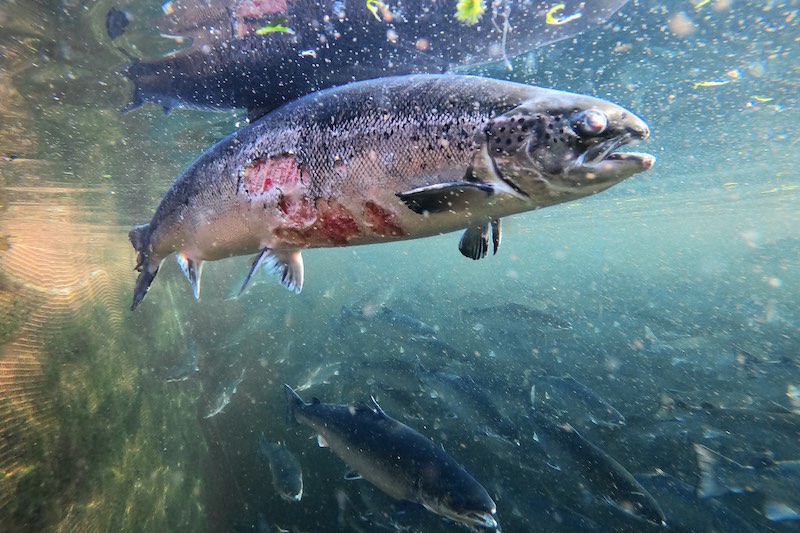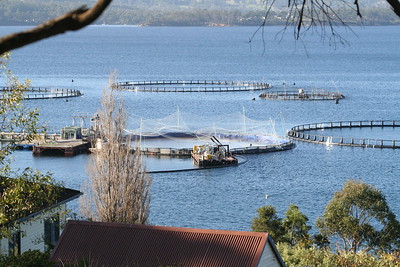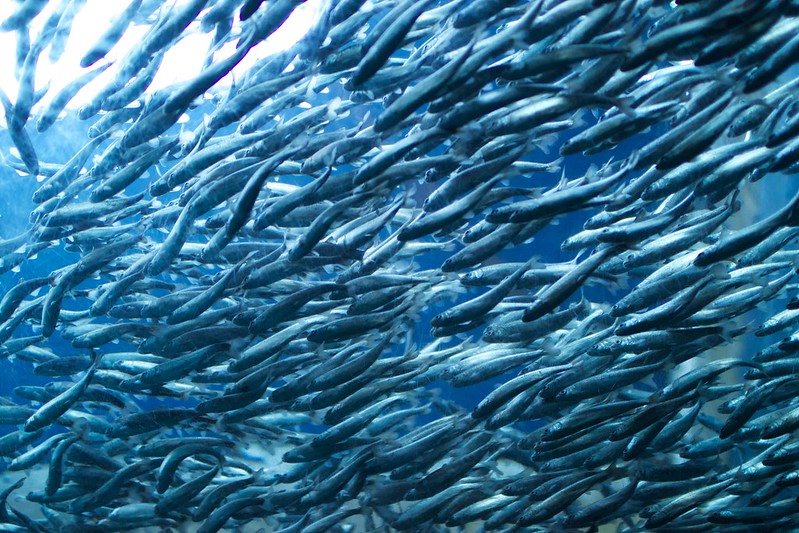Juan Villanueva
12th August 2022
Although wild salmon is one of our favourite fish and most nutritious, it is tagged as vulnerable, at least in the wild. This paradox is possible thanks to aquaculture techniques. Like inland livestock farms, there are different models, some more intense than others. However, because those farms are far from sight, and fish are less cute than cows, this issue has attracted much less attention
Just a handful of countries are salmon producers in the far North, like Norway, Scotland or Canada. Its pristine spring water and cold temperatures are ideal for growing this fish, which live in the sea but spawn in the river. And if they have the chance, they will swim thousands of miles to return to the same river where they were born. So, it’s crucial to keep these ecosystems. Salmons are the canary in the mine for the rivers, and they are suffocating in the context of the climate crisis.
Recently, Scottish authorities have blocked the expansion of a farm due to environmental concerns. The Creag an T’Sagairt salmon farm has a license to produce 2,500 tonnes, and it applied for increasing to 3,100 tonnes. «It has not been satisfactorily demonstrated that the development will not have an increased impact on the natural environment,» justify the decision notice.

«It is acknowledged that the wild salmon and sea trout population is in decline. Regardless of the cause, Marine Scotland acknowledges that the additional 250 tonnes of biomass have the potential to exacerbate this», it concludes.
Friends of Loch Hourn commissioned scientific modelling, which showed that increased sea lice would potentially harm the whole ecosystem. Peter Fletcher, whose family has lived there for many generations, said: «At least two main rivers here are now extinct as far as salmon are concerned, and a third is teetering on edge.
Nonetheless, the farm owner from Norway disagrees. They argue that there is no proven relation between salmon farming and the decline of wild salmon. Its Head of Environment, Stephen Maclntyre, said: «We were disappointed with the decision of the committee given the application received no objections from all statutory science bodies and that the planning officials had recommended the application for approval. We are reviewing the process that led to this decision and considering our options.»
The impact of salmon farms
On the contrary, the conservation charity WildFish celebrates the decision. Rachel Mulrenan, deputy manager in Scotland, told The Green Bee: «Although we were not involved, from my perspective, I think it is a positive outcome.
«The conclusion was drawn based on the potential damage on wild fish.»
Mulrenan explained the wild salmon population is in decline worldwide. IUCN tagged it as vulnerable in Europe, and least concern worldwide, though this evaluation was in 1996. Salmons find many barriers like dams or global warming, more intense as closer to the poles. So, for them, opposing salmon farms is a concrete action they can take with a positive result: «Reports show that low sea level of sea lice on juvenile can have a really negative impact.»
Sea Lice Problem
With the current trend for declining numbers of Atlantic salmon across their native range, images like this are likely to become much harder to capture than they already are - enjoy 👍#beboldforsalmon #wildlifephotography #highlands #scotland pic.twitter.com/6G4BcenB3l
— Chris Conroy (@chris_fish_bio) July 12, 2022
Sea lice is a parasite which eats salmon alive. It is the most concerning issues for the industry. It is related to hygiene, space available, and how clean the water is. According to Wildfish, the mortality rate is between 20 and 25% on Scottish farms. Companies comply with the law, but Wildfish argue it is too soft: «Those are companies that run across the countries, and you could think if they adhere to a specific rate in Norway, they should be able to do it as well in Scotland, but here the threshold is much higher.»
However, Dr Martin Jaffa, who has worked in aquaculture all his life and has a PhD in fish farming, defends that salmon farming has a minimal impact on wild fish. He mentions a good practice code, which the companies shall follow, and that independent labels like ASC or MSC assessed them. And he completes with confidence, «The fish produced in Scotland will go to one of the major retailers, and they have their own code, and they inspect regularly».

There is room for improvement, but «salmon farming is the most regulated food production in the UK,» he finishes. For example, the UK is ahead of the EU in stop finning sharks.
Salmon farming started in Scotland in the 70s and has evolved since then. The original wood pens were quite hard to clean; now they have new materials, practices, and machinery. However, it is naive to think that it is possible to throw away unknown chemicals with no effects in an interconnected ecosystem.

